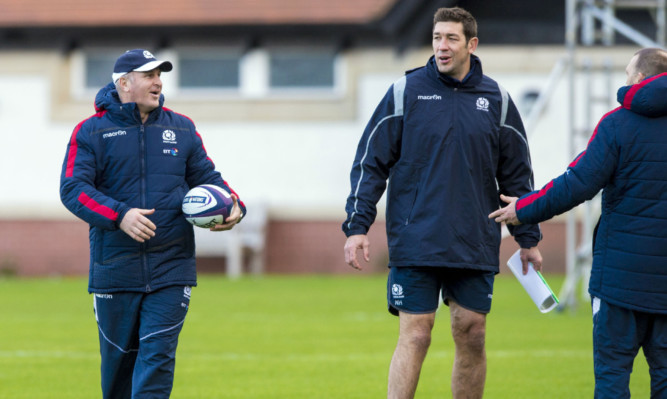Jason O’Halloran’s timing is off for his few days in St Andrews as his golf clubs don’t arrive from New Zealand until next week, but the new Scotland attack coach thinks he’s coming into the squad at precisely the right moment.
O’Halloran had his first “boots on the ground” work with the Scotland squad yesterday although only one of the chosen centres was fully fit but is excited about working with Scotland’s impressive young backs, seeing similarities with many of the players he coached in his homeland.
The 43-year-old who coached Manuwatu to New Zealand’s National Provincial Championship and was assistant to two Junior World Cup-winning “Baby Blacks” Under-20 teams arrived in Scotland in November and has been “building relationships” so far, but it’s been “big picture” stuff before the finer points are addressed over the next two weeks.
“It makes this a pretty big two or three days,” he said from the team camp in the blustery Auld Grey Toun. “We’re working on a bit of the detail around the structures, but it would be silly of me to try and re-invent the wheel with a very short build up to the England game.
“A lot of what was done at the World Cup was really good and it’s just a question of tweaking that and coming up with one or two variations to keep the opposition on their toes.”
With Mark Bennett still recovering from shoulder trouble, Alex Dunbar having a mild thigh strain, Peter Horne apparently suffering a recurrence of his foot injury and Duncan Taylor restricted with a dead leg, it was more about theory than action during yesterday afternoon’s “mapping” session.
“The injuries mean we have to do a lot of work off our feet, so that they are clear to what the structure is and they’re very clear what their roles are,” he said.
“Mark Bennett , the medics are pretty confident he’ll be alright for England, and that’ll pan out this week and next. If he can’t play for Glasgow this weekend I’d still be fine as he’s played a lot of rugby and is in good form off the back of a good World Cup.
“Matt been in good form and Duncan been outstanding for Saracens recently. He’s played across the park and played pretty well wherever they want him. I think out of the group we have we’ll have two really good centres and a backup on the bench as well.”
O’Halloran sees similarities with the player he brought up for Manuwatu when home in New Zealand, winning the National title with the province before opting for Scotland ahead of a chance at coaching in Super Rugby.
“Finn Russell and Mark remind me of players I worked with and Stuart Hogg is a lot like (World Rugby Uoung Player of the Year) Nehe Milner-Skudder,” he said. “There are lots of similarities and hopefully some similar philosophies will work out.
“It’s just clearing the clutter and bringing it back to the essence of the game, the quality of your kicking, how quickly you produce ruck ball, how quickly you identify space and opportunity.
“If you look at what we have out wide in terms of pace, if we can move the ball there quickly going forward that’s a good simple recipe for success.”
O’Halloran believes that carrying the confidence gained from the World Cup on to the pitch from the first whistle is crucial.
“I thought they finished games really strongly in the World Cup and once they found their feet and confidence played some really good footie,” he said. “The key is to play with that confidence from minute one, rather than feel our way into the game, be authoritative from the start.
“They should have the confidence to do that, there are some really good players in the group and being confident to express themselves is the key to it.
“I believe in what Vern’s doing, it’s a great plan which takes in the culture of the group and the country. He’s a bloody good man, really honest with you and that’s all you can ask for as a coach.”
O’Halloran probably could have worked with his former colleague Dave Rooney at the Chiefs when moving on from Manuwatu but chose Scotland instead.
“It’s different challenges, and different style of rugby,” he said. “I think I know how to organise an attack against an up and out defence which is what you get in NZ a lot.
“The challenge of devising attacking strategies against the blitz defences like England’s and to have more thorough kicking strategy, which is key in the Northern Hemisphere, also attracted me. I could have gone with the Chiefs but I thought this was a better way to become a more rounded coach and work with another world class coach, learn some new stuff.”
